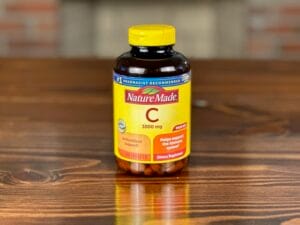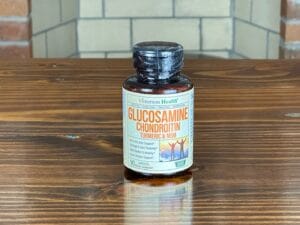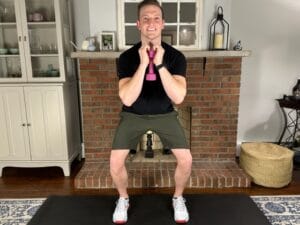Looking for the Best Exercises for Osteochondritis Dissecans?
If you’ve been diagnosed with osteochondritis dissecans (OCD), you’re likely dealing with pain, swelling, or even joint locking that makes daily activities harder. Whether you’re preparing for surgery or managing conservatively, targeted rehab can help stabilize the joint, protect the cartilage, and reduce symptoms over time.
This article offers a safe, progressive home exercise plan developed by a Doctor of Physical Therapy. The exercises are designed to reduce pain, restore mobility, and build strength in the surrounding muscles—without aggravating the joint.
Before we dive in, check out our related guides on knee cartilage injuries:
Let’s start with early-phase movements to reduce swelling and restore gentle range of motion—while protecting the healing cartilage.
Want a quick-reference PDF? Scroll down to the bottom of this post to grab your free printable plan!
Disclaimers and Disclosures: All information in this article is for informational and educational purposes only and should not be taken as individual medical advice. Additionally, this article contains affiliate links, meaning when you make a purchase, we make a small commission at no additional cost to you. For more information, see our full Disclaimers and Disclosures.
Weeks 0–2 Exercises for Osteochondritis Dissecans (Conservative Management)
In the first two weeks, the goal is to reduce swelling, protect the lesion, and maintain basic mobility without aggravating the joint. Focus on gentle motion, quad activation, and circulation-promoting exercises. Try to avoid deep bending, jumping, or other painful movements.
Perform these exercises 1–2 times per day, only if pain stays mild and controlled.
This program was created by a Doctor of Physical Therapy and Orthopedic Clinical Specialist. As always, consult your healthcare provider before starting any new exercise regimen.
1. Calf Stretch on Slant Board
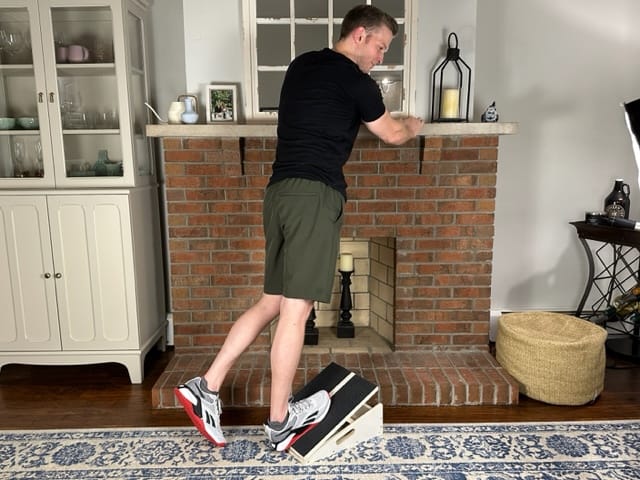
- Purpose: Improve calf flexibility and knee extension range of motion.
- Benefits: Enhances walking mechanics and reduces strain during gait.
- How to Do It:
- Stand on a slant board with both feet, heels down.
- Keep knees straight and lean forward slightly.
- Hold the stretch for 30 seconds and repeat 5 times.
- Helpful Link: Best Slant Board can be found in the link below.
2. Heel and Toe Raises
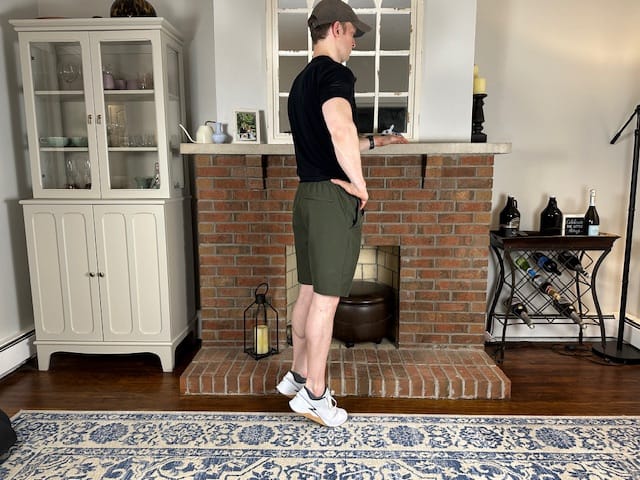
- Purpose: Strengthen ankle and calf muscles to aid balance and support.
- Benefits: Improve circulation, gait stability, and early mobility.
- How to Do It:
- Stand near a counter or wall for support.
- Slowly rise onto your toes (heel raise), then rock back and lift your toes off the ground (toe raise)
- Repeat 15 times, complete 2 sets.
- Helpful Link: Best Minimalist Shoes for heel/toe raises can be found in the link below.
3. Hamstring Stretch with Strap
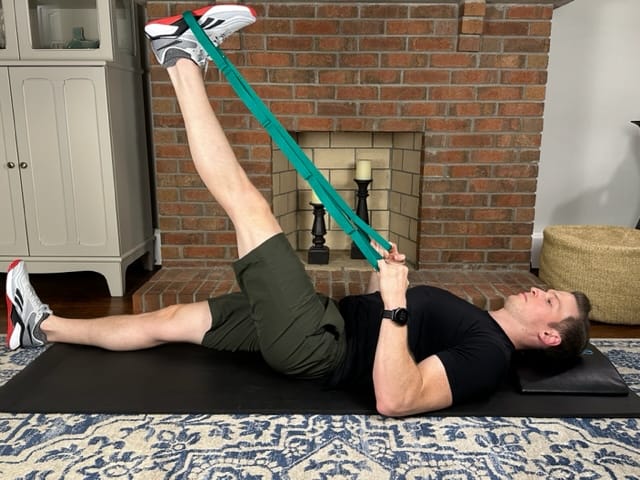
- Purpose: Improve hamstring flexibility without stressing the knee.
- Benefits: Reduces posterior tension and supports joint alignment.
- How to Do It:
- Lie on your back, loop a strap around your foot.
- Raise your leg up as high as you can, while keeping your knee straight.
- Hold 20 seconds, repeat 5 times.
- Helpful Link: Best Stretching Strap can be found in the link below.
4. Straight Leg Raise
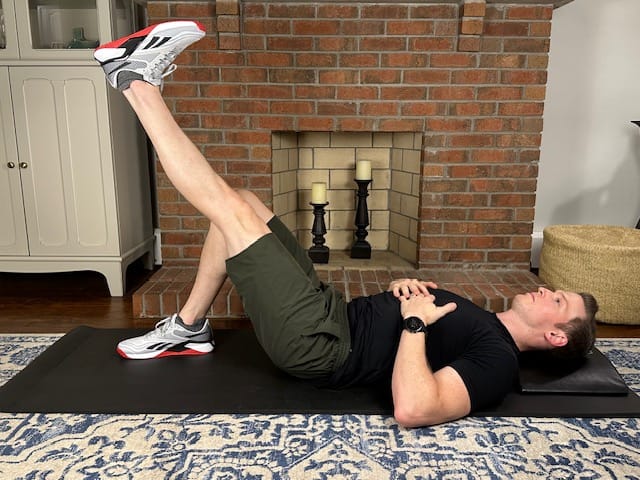
- Purpose: Strengthens the quad without moving the knee joint.
- Benefits: Maintains quad strength while protecting the joint.
- How to Do It:
- Lie on your back with one leg bent and the other straight.
- Tighten your thigh and lift the straight leg to the height of your bent knee, then lower slowly.
- Repeat 10 times, complete 2 sets.
- Helpful Link: Best Thick Yoga Mat for comfort can be found in the link below.
5. Short Arc Quad
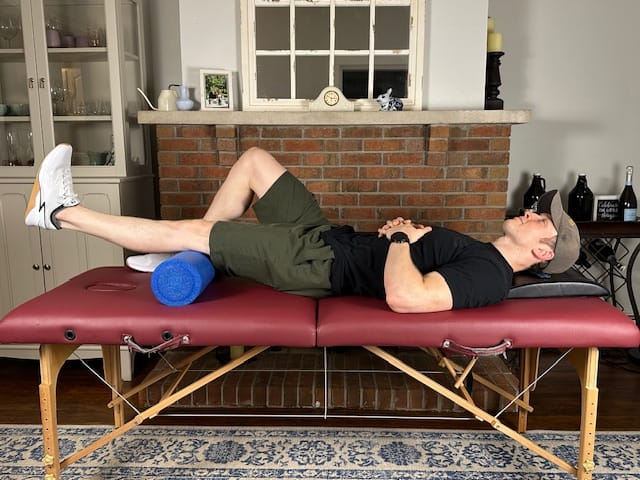
- Purpose: Strengthens quads through a small and safe range of motion.
- Benefits: Supports strengthening without placing excessive stress on the knee.
- How to Do It:
- Rest your knee over a foam roll while lying on your back.
- Straighten the knee by lifting your heel off the surface, pause briefly at the top.
- Repeat 15 times, complete 2 sets. Add an ankle weight for an added challenge.
- Helpful Link: Best Ankle Weights and Foam Roll can be found in the links below.
6. Long Arc Quad
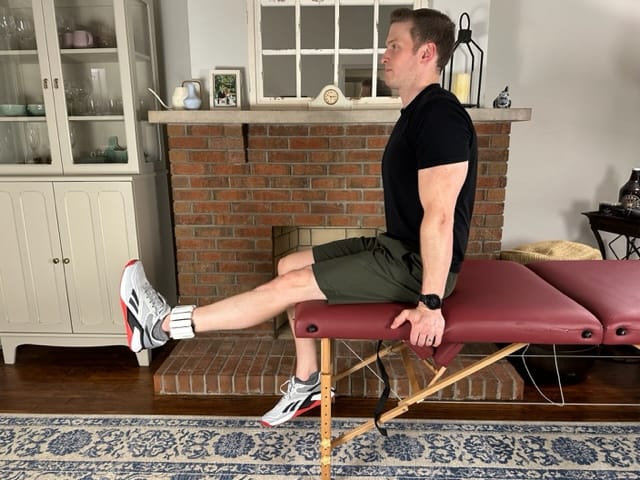
- Purpose: Strengthens the quads through a fuller range of motion.
- Benefits: Prepares the muscle for stairs and walking activities with osteochondritis dissecans.
- How to Do It:
- Sit upright with your thigh supported.
- Slowly extend your leg fully, hold briefly, then lower.
- Repeat 15 times, complete 2 sets. Add an ankle weight as strength improves.
- Helpful Link: Best Ankle Weights can be found in the link below.
7. Heel slides
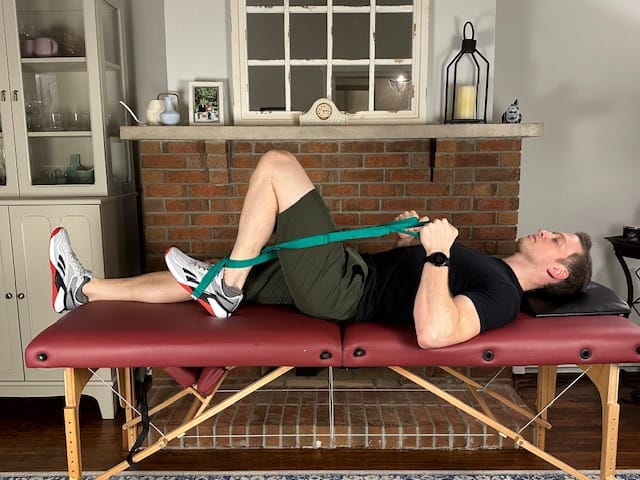
- Purpose: Gently stretches restores flexion range of motion.
- Benefits: Promotes joint lubrication and knee mobility.
- How to Do It:
- Loop a strap around your foot.
- Slide your heel slowly toward your buttocks, keeping your foot on the surface.
- Hold for 10 seconds and repeat 10 times.
- Helpful Link: Best Stretching Strap with loops can be found in the link below.
Bonus: Ice Pack and TENS for Osteochondritis Dissecans Inflammation and Pain Relief
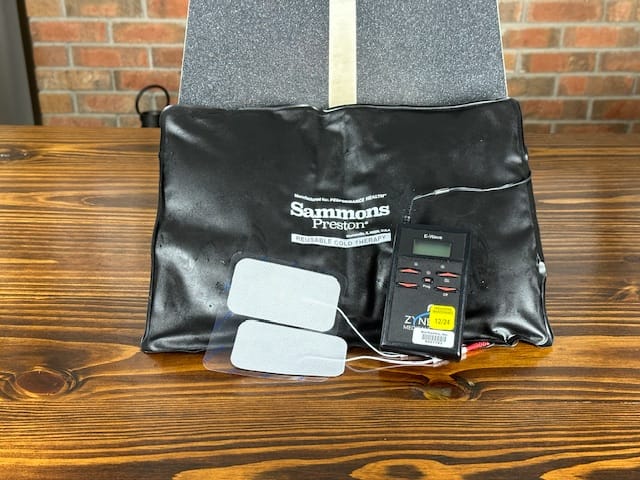
- Purpose: Reduce pain, inflammation, and muscle inhibition during early recovery.
- Benefits: Enhances comfort and reduces swelling, especially after exercise.
- How to Use:
- Place TENS pads just over the painful area of the quad.
- Apply ice in a pillowcase for 10–15 minutes post-exercise.
- Helpful Link: Best TENS Unit and Ice Packs can be found in the links below.
Week 2–5 Exercises for Osteochondritis Dissecans
This next phase of osteochondritis dissecans rehab emphasizes controlled loading to support a return to walking, stairs, and light sport-specific movements. It’s important to progress gradually to avoid re-injury.
Perform these exercises 5 times per week, and perform the exercises from phase 1 on the other days.
This program was created by a Doctor of Physical Therapy and Orthopedic Clinical Specialist. As always, consult your healthcare provider before starting any new exercise regimen.
1. Bridges with Band
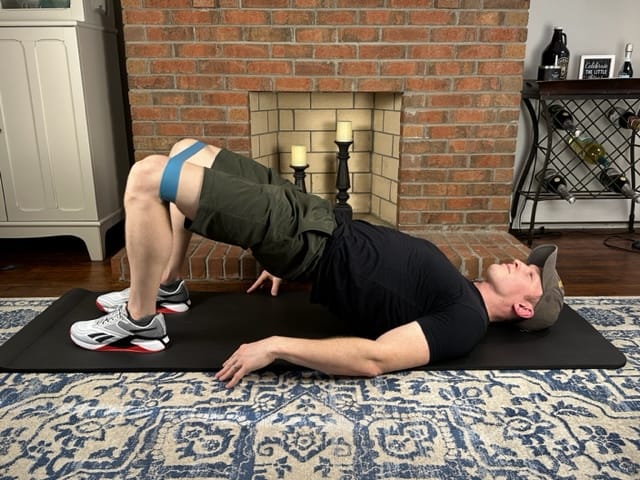
- Purpose: Strengthens glutes and hamstrings without overloading the knee joint cartilage.
- Benefits: Improves hip extension and core stability, promoting better knee alignment with osteochondritis dissecans.
- How to Do It:
- Lie on your back with knees bent and band above knees.
- Squeeze glutes and lift hips off the floor, hold for 2 seconds at the top.
- Perform 15 repetitions and complete 2 sets.
- Helpful Link: Best Resistance Bands can be found in the link below.
2. Prone Quad Stretch
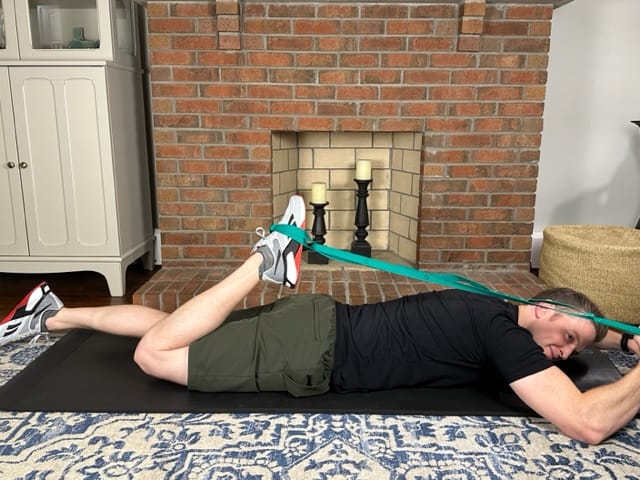
- Purpose: Lengthen the quad muscle and reduce tension on the knee.
- Benefits: Reduces stress on the knee and improve mobility.
- How to Do It:
- Lie on your stomach and loop a strap around your ankle.
- Gently pull until you feel a stretch in the front of your thigh.
- Hold for 10 seconds, repeat 10 times.
- Helpful Link: Best Stretching Strap with loops can be found in the link below.
3. Cone Step Over
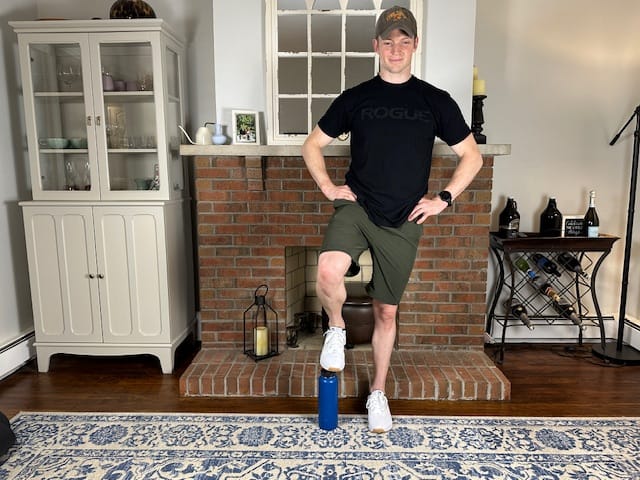
- Purpose: Improves active knee flexion and coordination of movements.
- Benefits: Prepares for walking, stairs, and uneven terrain.
- How to Do It:
- Stand on one side of a small cone and hold on to your counter for balance.
- Step sideways over the cone with both feet, then back to the start position.
- Repeat 10 times, complete 2 sets.
- Helpful Link: Best Stackable Cones can be found in the link below.
4. Forward Step-Ups
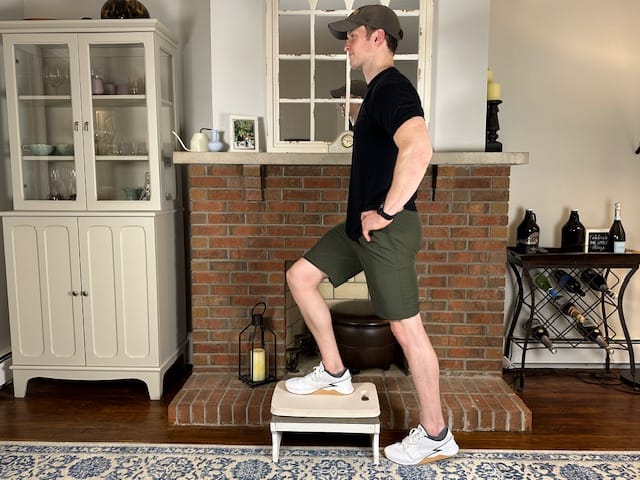
- Purpose: Strengthens quad and glutes in a functional movement.
- Benefits: Builds strength for stairs and daily activities.
- How to Do It:
- Stand in front of a step with a counter nearby for balance.
- Step up with your injured leg, then lower with control.
- Repeat on the other side, perform 10 reps, complete 2 sets.
- Helpful Link: Best Adjustable Stepper can be found in the link below.
5. Lateral Step-Overs
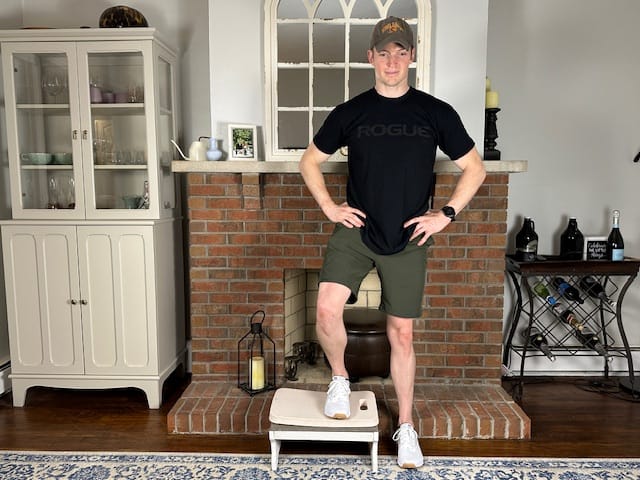
- Purpose: Enhances coordination and eccentric quadriceps control.
- Benefits: Improves stability and prepares for lateral movement in sport and life with osteochondritis dissecans.
- How to Do It:
- Stand beside the step and step laterally up with your outer leg.
- Bring the other leg up, then step down to the other side.
- Return to start in the same fashion, complete 10 reps and perform 2 sets.
- Helpful Link: Best Adjustable Stepper can be found in the link below.
6. Isometric Ball Abduction on Wall
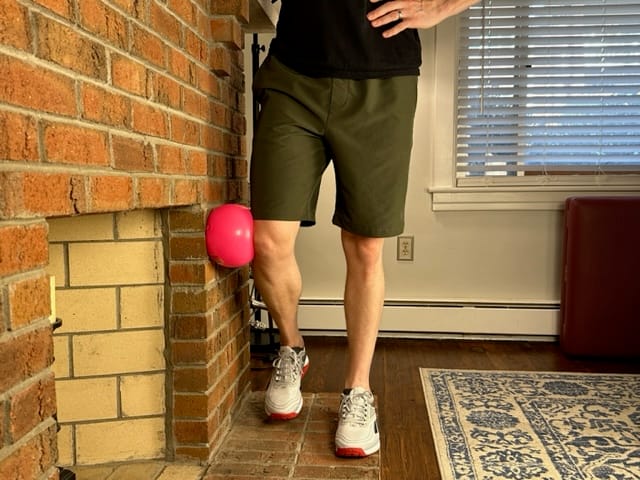
- Purpose: Strengthen hip abductors for knee control.
- Benefits: Improves alignment during walking and stairs.
- How to Do It:
- Stand with ball between your knee and the wall.
- Press your knee outward into ball.
- Hold 5 seconds, repeat 15 times.
- Helpful Link: Best Exercise Ball can be found in the link below.
Weeks 5–8 Exercises for Osteochondritis Dissecans
This next phase of our osteochondritis dissecans rehab program focuses on dynamic balance, single leg coordination and strength, and building muscle endurance for full return to activities. Avoid joint pain and progress in a controlled manner.
Perform these exercises 4 times per week, and perform the exercises from phase 1 or 2 on the other days.
This program was created by a Doctor of Physical Therapy and Orthopedic Clinical Specialist. As always, consult your healthcare provider before starting any new exercise regimen.
1. Sidesteps With Band
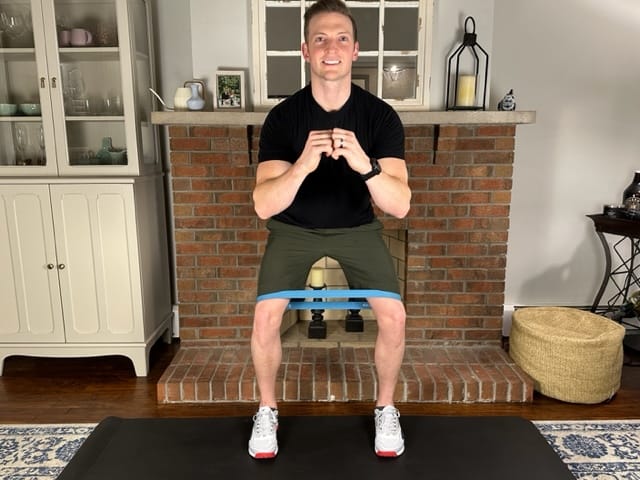
- Purpose: Strengthen glutes and hips for knee alignment.
- Benefits: Improves knee control and reduces dynamic valgus.
- How to Do It:
- Place a resistance band just above your knees and lower into a mini squat.
- Step sideways slowly, keeping tension in the band.
- Perform 12-15 steps in each direction, rest, and repeat 3 times.
- Helpful Link: Best loop Resistance Bands can be found in the link below.
2. Step Downs
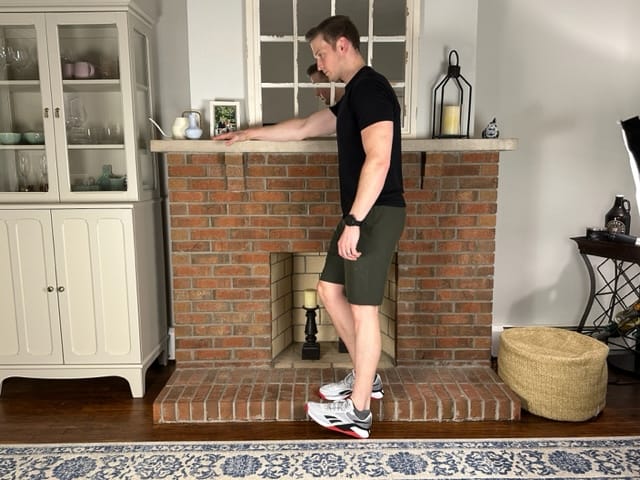
- Purpose: Strengthen quads in a lengthening (eccentric) pattern.
- Benefits: Prepares the knee with osteochondritis dissecans for downhill/stair control.
- How to Do It:
- Stand on step, slowly lower until opposite heel touches the ground.
- Control motion without letting your knee collapse inward.
- Repeat 10 times and complete 2 sets.
- Helpful Link: Best Adjustable Step can be found in the link below.
3. Single Leg RDL (Romanian Deadlift)
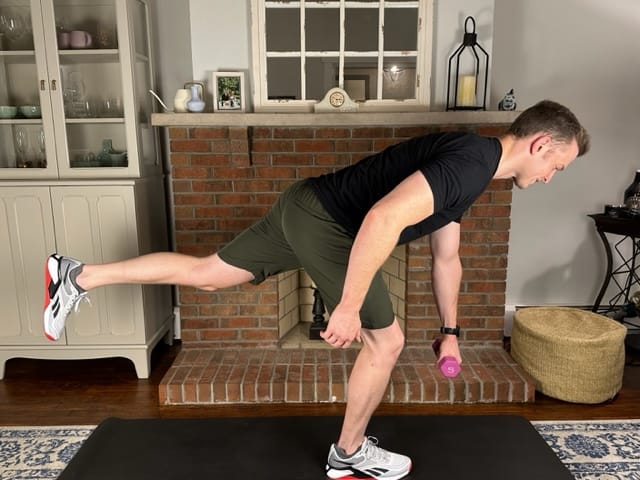
- Purpose: Strengthens the posterior chain and improves dynamic balance.
- Benefits: Reinforces hip stability and builds functional control.
- How to Do It:
- Stand on your injured leg and hold a light weight in the opposite hand.
- Hinge at the hips, extending the free leg back as the weight lowers.
- Return to upright by squeezing your glutes and hamstrings. Complete 2 sets of 10 reps.
- Helpful Link: Best Dumbbell Weights can be found in the link below.
4. Goblet Squats
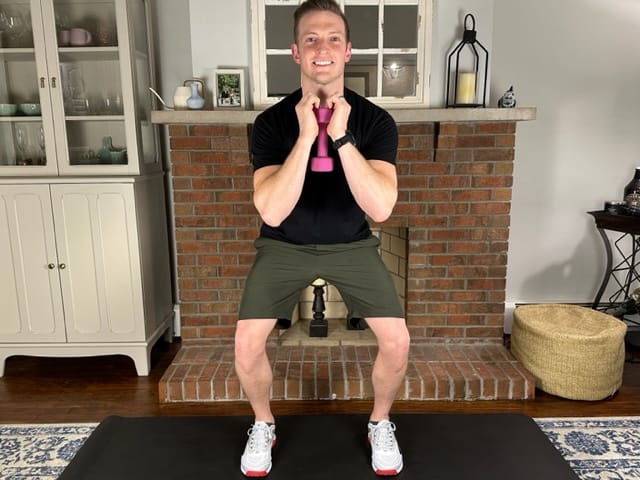
- Purpose: Builds compound strength in quads, glutes, and core in a functional movement pattern.
- Benefits: Improves squat mechanics, knee control, and lower body power when building back from osteochondritis dissecans.
- How to Do It:
- Hold a dumbbell close to your chest with elbows down.
- Squat down slowly, keeping your chest tall and knees aligned.
- Press through your heels to return to standing 10 times, complete 2 sets.
- Helpful Link: Best Dumbbell Weights can be found in the link below.
Looking for a simple way to stay consistent?
👉 Download the free full Osteochondritis Dissecans Exercise Program + Exercise Tracker (PDF) to follow and log your daily progress.
Best Exercises for Osteochondritis Dissecans: Final Thoughts
Osteochondritis dissecans can be a frustrating diagnosis—especially when it limits your ability to move, train, or live actively. But with a structured home program and a gradual, phase-based approach, you can reduce pain, protect the joint, and rebuild strength safely.
This rehab plan was created by a Doctor of Physical Therapy to help you progress through the early, middle, and late stages of recovery—without needing expensive equipment or a gym membership. The exercises in this guide target not only the knee joint, but also the surrounding muscle groups that stabilize and protect it.
Stay consistent, listen to your body, and don’t rush through pain. With smart movement and patience, you’ll rebuild strength, restore control, and return to walking, stairs, and sport with greater confidence and less risk of re-injury.
Why Trust Physical Therapy Simplified for Early-Stage ACL Recovery Guidance?
At Physical Therapy Simplified, our mission is to provide an accessible, trustworthy source of physical therapy guidance that anyone can understand, follow, and benefit from. We want you to feel confident that you’re getting evidence-based advice and the best exercises for osteochondritis dissecans—all designed to reduce pain and restore your highest functional potential.
This article was written by Andrew Harkins, PT, DPT, OCS, a licensed physical therapist with over twelve years of clinical experience. He is certified by the American Board of Physical Therapy Specialties as an Orthopedic Clinical Specialist and has successfully helped hundreds of patients recover from injuries to the knee joint and return to sports, work, and daily activity with strength and confidence.
Andrew has also served as a teaching assistant at the University of Pittsburgh’s Doctor of Physical Therapy Program, where he contributed to education on knee injuries, joint preservation, and return-to-sport protocols. His evidence-based, real-world approach ensures you’re getting trusted information that’s already helped others recover successfully.
